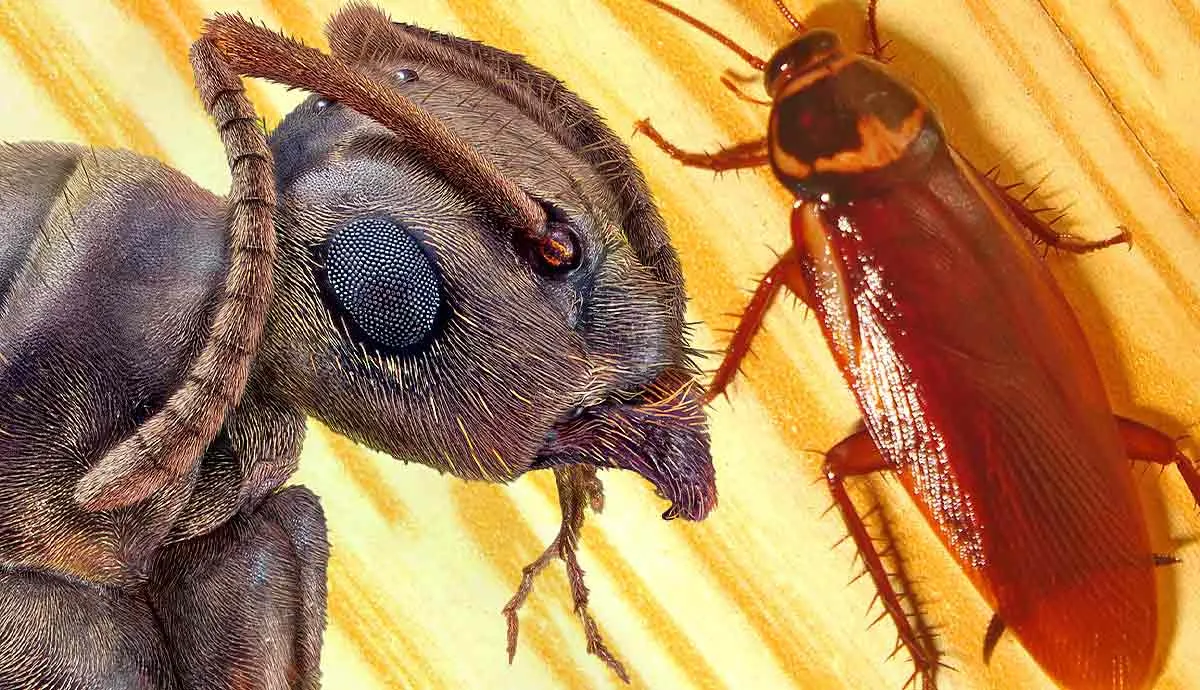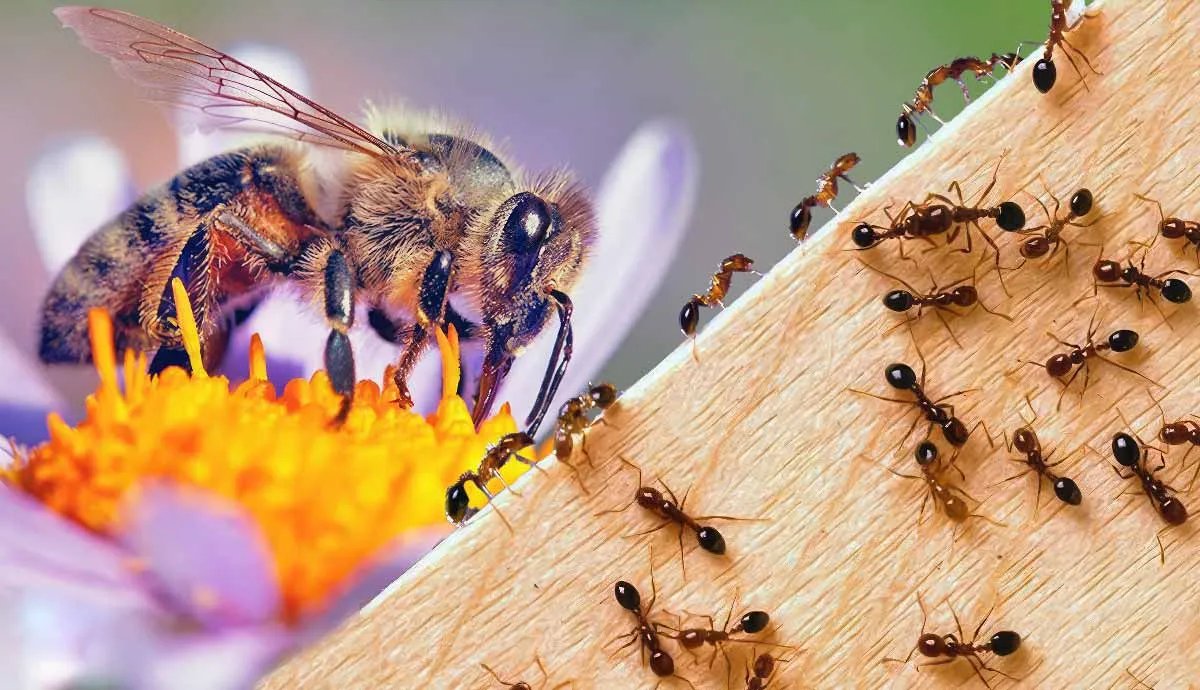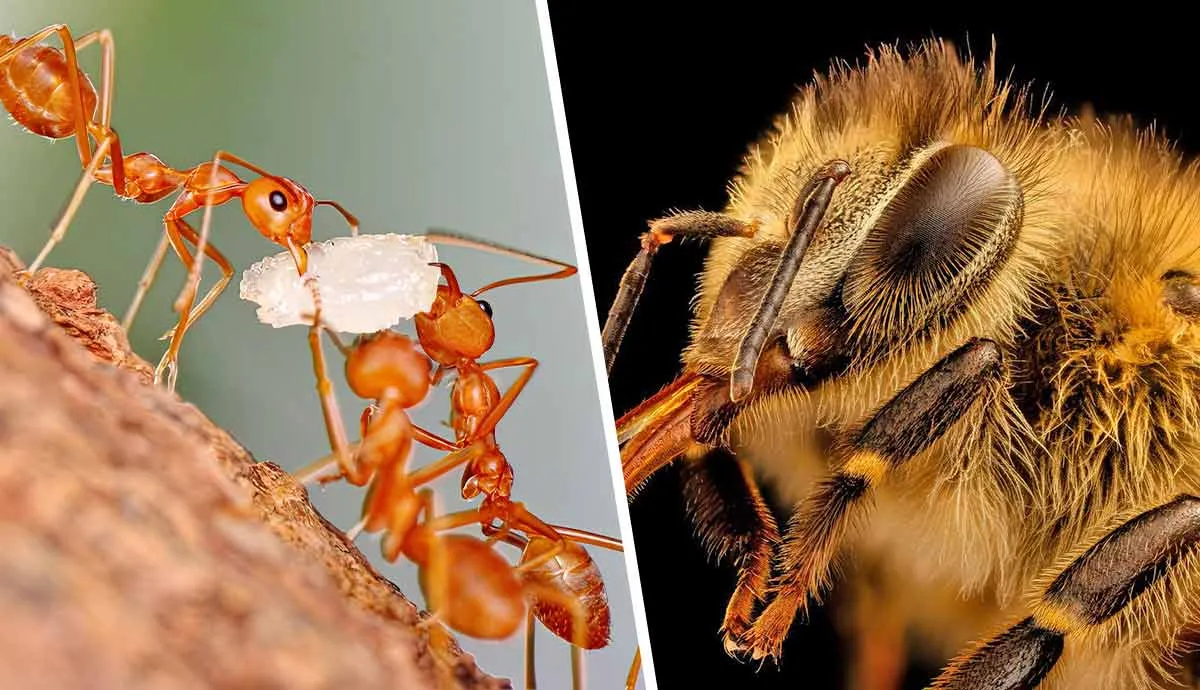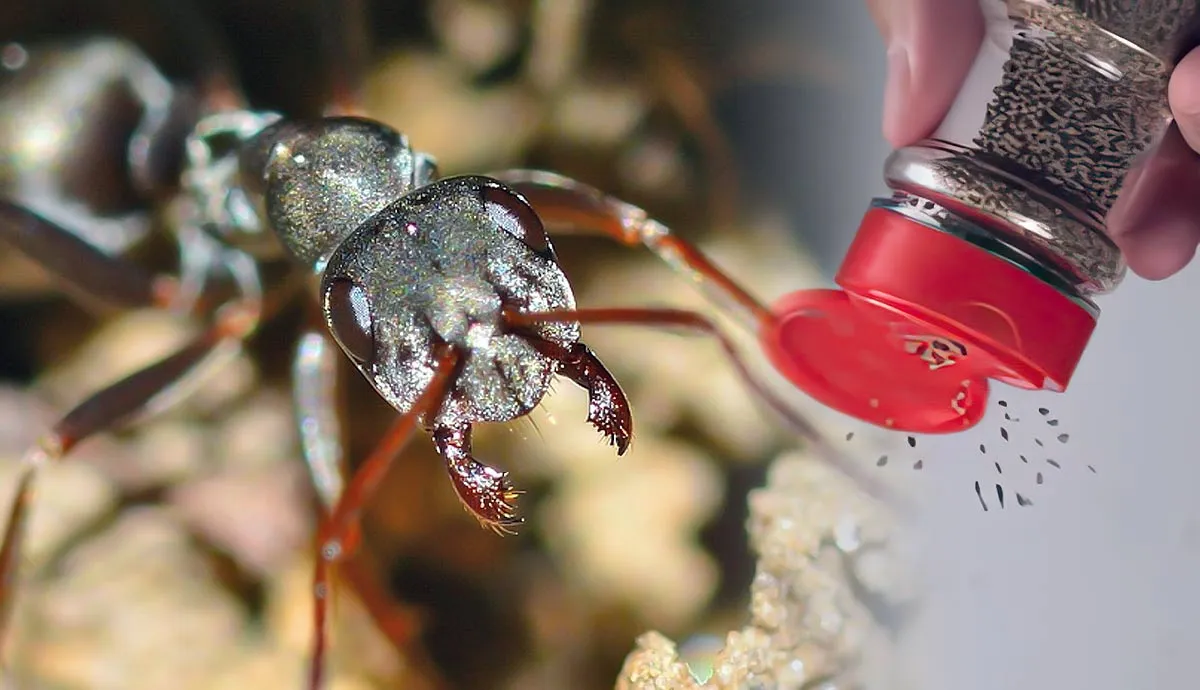An insect’s life cycle follows similar stages: egg, larva, pupa, and adult (or egg, nymph, adult). Most insects live rather short lives that can range from a couple of hours to a few months.
Yet, some insects break this mold. Periodical Cicadas, Splendor Beetles, Black Garden Ant Queens, and Termite Queens live for decades, making them the insects with the longest life cycles.
Why do these insects live so long?
Let’s look at the life cycle of each of these long-living creatures to discover the reasons behind their longevity.
Periodical Cicadas
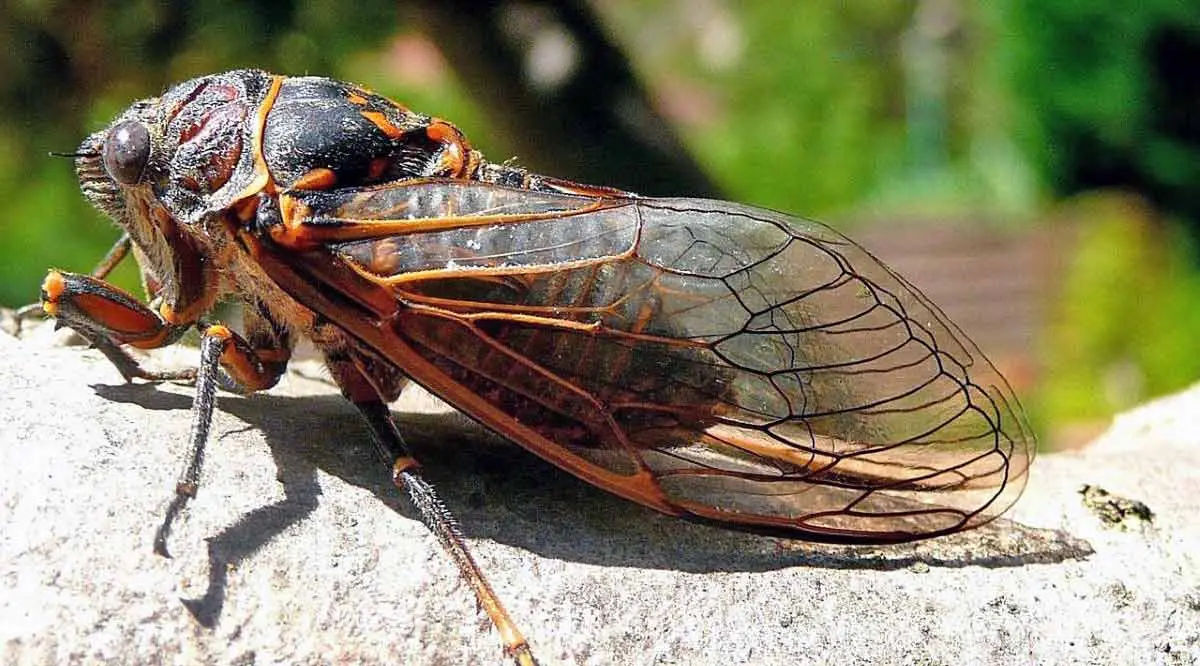
Many people have probably heard the tell-tale sound of cicadas in the summertime. These loud insects have black bodies with orange underneath, bright red eyes, and clear wings with black veins. They are about an inch long.
There are a variety of species of cicadas that live throughout the world. Many of these are annual cicadas, which don’t have synchronized life cycles and only live a few years.
Yet, the Periodical Cicada is unique. They spend most of their lives in their larval form, underneath the ground feeding on plant roots. After 13 to 17 years, they emerge in springtime to molt and become adults. Since Periodical Cicadas are synchronized, the entire brood will emerge within a couple of weeks of each other.
Perhaps you remember the hubbub about Brood X in 2021? That was one of the largest broods of periodical cicadas. They emerge together about every 17 years.
After these insects emerge and molt, males cluster together and sing their chorus to attract females. Once they mate, females deposit their eggs in tree branches.
The eggs hatch and the larvae go to the ground to begin the life cycle again. Then, 13-17 years later, the periodicals will emerge again.
Splendor Beetles
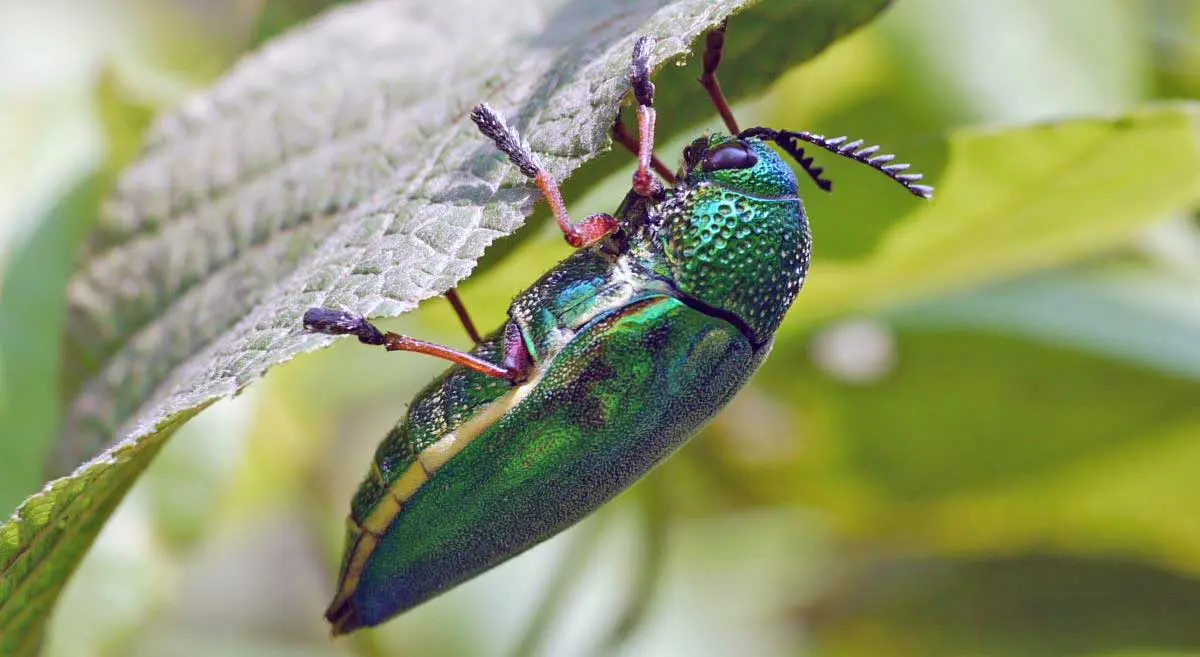
The Splendor Beetle is considered a pest by many. These long-lived beetles feed on oak trees, Chestnut, and Beeches. They slowly damage the host trees until they die back. These beetles can devastate forests and damage horticulture crops.
Adult Splendor Beetles have a metallic green body that is slender. There are several white spots on them, two on their wings. It takes two years for these bugs to go from egg to adult, but once they go through this initial life cycle, they can live for up to 30 years, wreaking havoc on trees the entire time.
Females deposit 5-6 eggs in the bark of an oak tree. Once the larvae hatch, they feed on the inner bark. They create a zigzag shape in the wood. Then, they develop into pupas while still in the bark, usually during their second winter. Then, in mid-spring, they emerge as adults and feed on the leaves to ready themselves to mate and lay eggs, starting the life cycle over again.
Black Garden Ant Queens
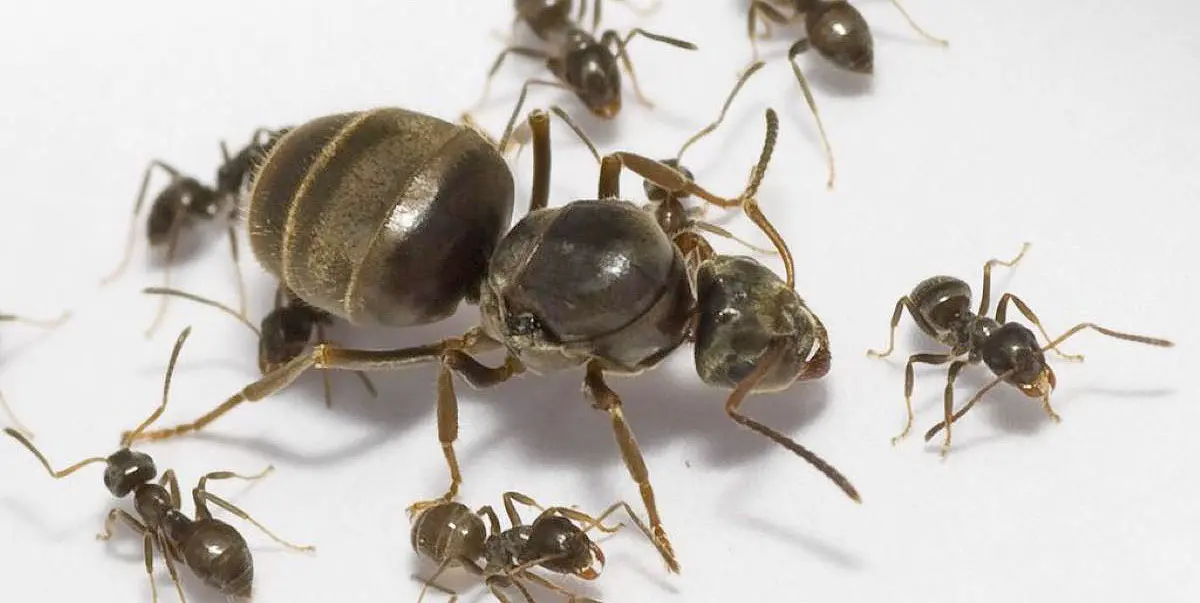
Black Garden Ants are extremely common. They frequent many gardens and homes during the hot, humid summer months. These creatures live in large colonies with thousands of ants who work together to keep the nest clean, feed the colony, and look after the young. At the center of this colony is the Black Garden Ant Queen, who produces all the eggs.
Most black ants you see around your home and garden are workers. However, winged garden ants are the reproductive queens and males. After ants hatch from their eggs, they are cared for by the worker ants until through their larval and pupae stages. Then, these ants create a cocoon around themselves to complete the metamorphosis. The reproductive males and females will emerge from their cocoons with wings and swarm in late July to August.
At this time, they will mate, and then females will shed their wings and begin their colonies while males die shortly after mating. Queen Black Garden Ants can live from about 15-29 years, while worker ants live only around 4 years.
Termite Queens
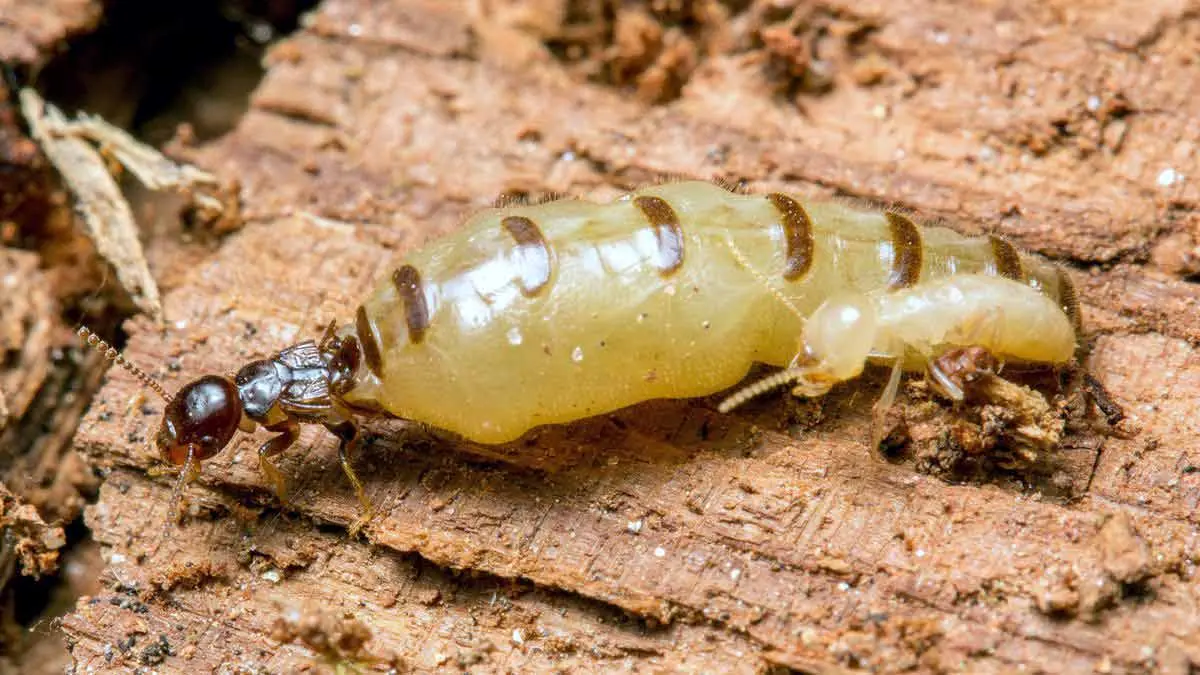
Similarly to ants, termites live in a colony of workers, and at the heart of their colony is the queen. She lays all the eggs for the colony and is three times as large as the other termites in the mound.
When termites hatch from their eggs, they are either workers, soldiers, or alates. Alates are the reproductive males and females of the colony. These go off to start their colonies. In the same way that female ants mate and shed their wings, termite queens do the same.
Then, they dig a hole in the ground where they will lay an egg every 3 seconds for the rest of their lives. This lifespan is about 15 years. Eventually, the female's abdomen swells until she is too large to leave her chamber. Then, she is cared for by the workers who feed her and clean her until she can no longer reproduce.
When she has come to the end of her life, the workers come and lick her to death.
Conclusion
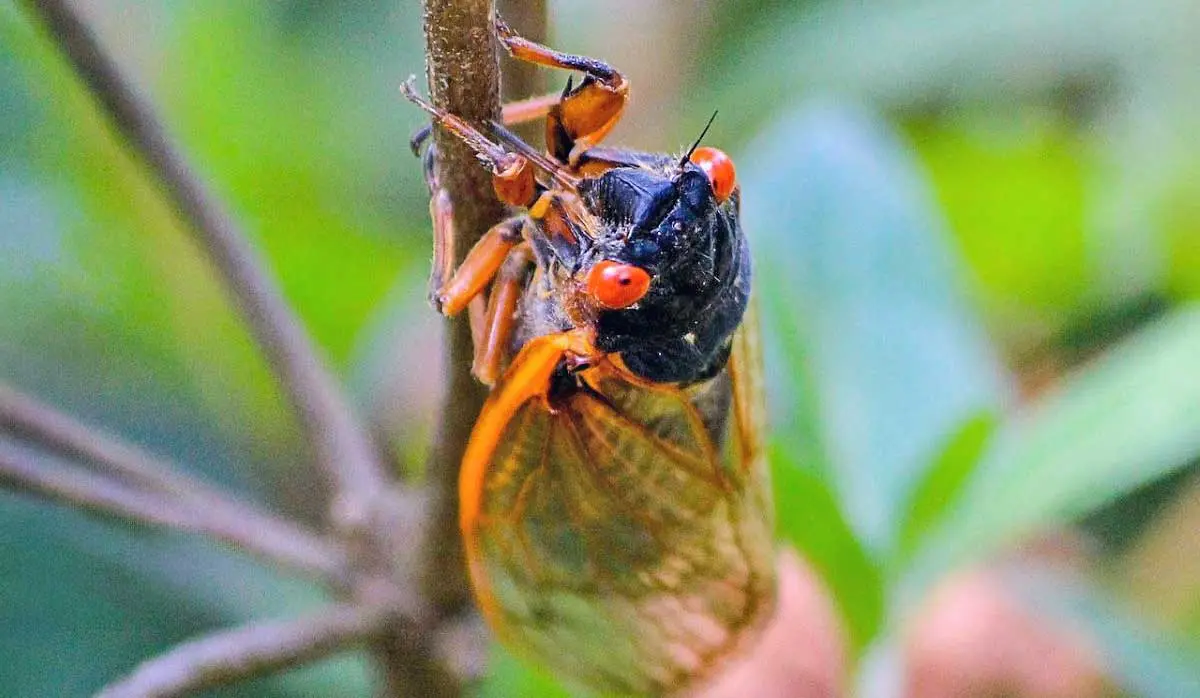
The insects with the longest lives tend to either spend a long time in their larval stage or function as the mother to the colony. These long-lived insects are fascinating and break the mold when it comes to what we expect from these creepy crawlies. Next time you hear a cicada screeching in the trees or see some ants walking along a garden path, think about the life cycle of the amazing creatures.


